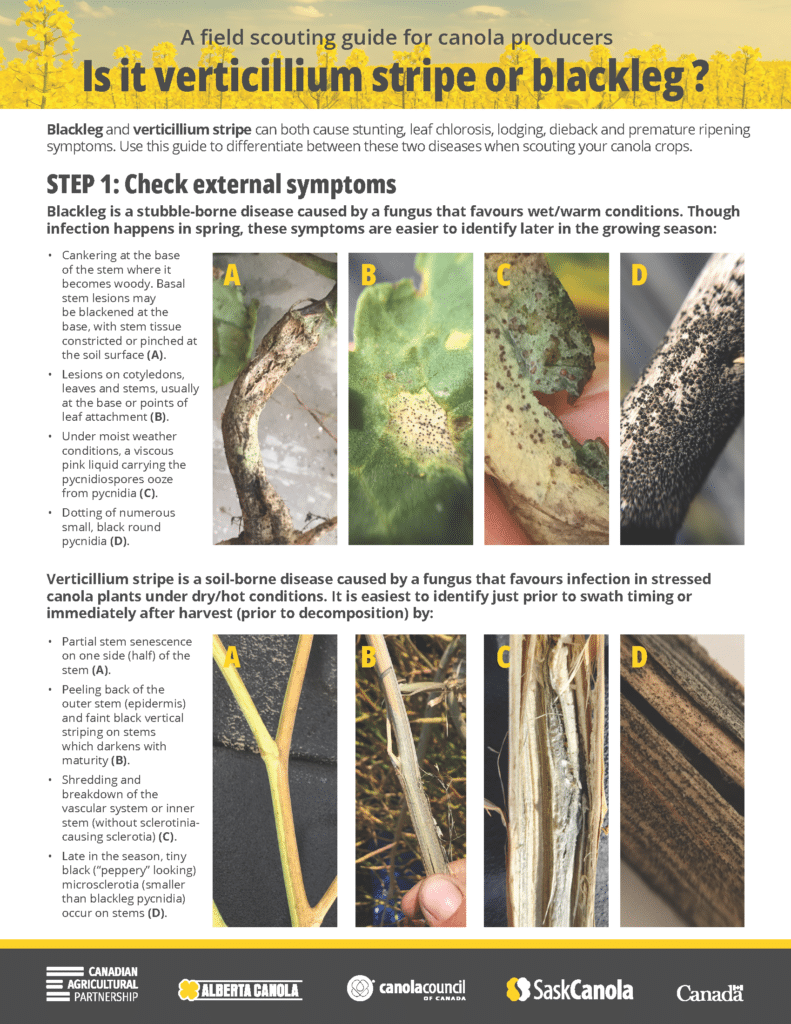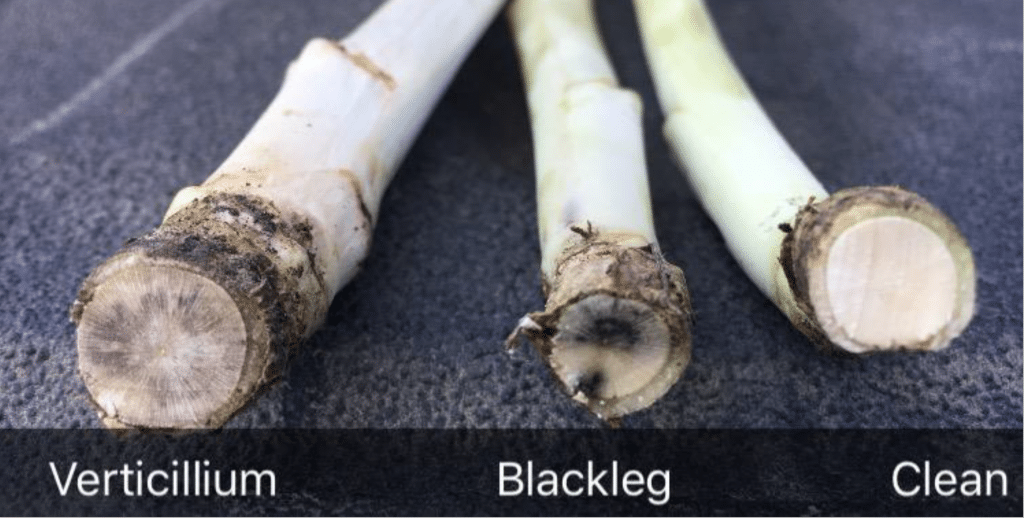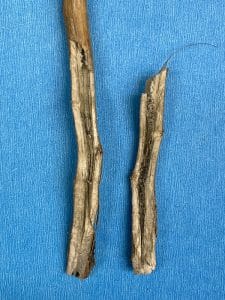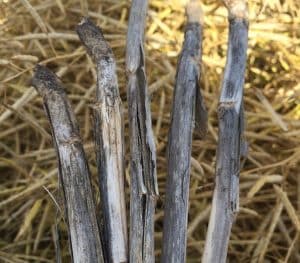Researchers detected verticillium stripe, caused by the pathogen Verticillium longisporum, in canola in Manitoba in 2014. The disease is now across the Prairies and will cause yield loss.
The soil-borne fungus infects roots and travels up the water-transporting xylem in the stem. It will eventually plug the xylem, cutting off the flow of nutrients.
The Canola Encyclopedia has a disease cycle graphic.
(Verticillium stripe, caused by V. longisporum, is the verticillium disease of canola in Western Canada. Verticillium wilt, caused by V. dahliae, is a common disease in various other crops around the world.)

Key distinguishing features
Stem striping
When the crop is full height but still green, canola plants infected with verticillium stripe will often have a two-toned stem – half healthy and green and half discoloured and drying down. This half-stem senescence is where the “stripe” name comes from. You will not see half-stem senescing with blackleg or sclerotinia stem rot. Sclerotinia will cause stem discolouration, but it will not stripe half the stem.The only other disease to cause similar symptoms is fusarium wilt, but current canola cultivars all have resistance to that pathogen.
Stem cross section discolouration
Verticillium stripe infects roots and enters the plant’s vascular system. Verticillium hyphae and conidia fill up the vascular system, restricting the passage of water and nutrients throughout the plant. This gives the stem cross section a greyish colour that is easily confused with blackleg. We have two tips to distinguish the pathogens:
- With blackleg, stem tissue infection tends to be darker and cause distinct black wedge shapes. Verticillium is lighter grey, more general throughout the cross section and can present in more of a starburst pattern.
- Blackleg stem discolouration is confined to the crown area at the base of the stem. Verticillium darkening can extend well up the stem.
Stem peeling and weakening
Peeling stem skin is a symptom of verticillium stripe. Under that peeled outer layer will be the microsclerotia, often taking the shape of faint black vertical striping. Severely diseased stems may break off and can be confused with lodging. Sclerotinia stem rot will also cause weakened brittle stems, but sclerotinia will not have the stripy, speckly microsclerotia. Sclerotinia stem rot will cause the entire stem tissue to shred, not just the outer layer.
Black specks
As verticillium infection advances, microsclerotia will form on the underside of peeling stem skin. These can be found all the way up the stem. Verticillium specks may seem similar to blackleg pycnidia, but they’re much smaller – more like powdery pepper. In some cases, blackleg pycnidia will have a purple-pinkish ooze of pycnidiospores around them. Blackleg pycnidia are also confined to a lesion no more than a couple centimetres in size. If you see pink and specks confined to a lesion, it’s blackleg.
Scouting and testing
The disease is easiest to scout just prior to or just after harvest when symptoms are most obvious. The Identifying Verticillium Stripe video provides key scouting tips for effective scouting of this disease.
For a final confirmation, some labs (PSI Labs, Discovery and 20/20) will test plant tissue for the verticillium pathogens.

Differentiating between verticillium stripe, sclerotinia, blackleg, grey stem and fusarium wilt
Management
Read the Fundamentals article How to manage verticillium stripe.
More
- Canola Research Hub verticillium stripe research summaries.
- It also features the Verticillium stripe: Researching a new canola disease threat blog.
- The Canola Encyclopedia’s Verticillium stripe chapter provides a succinct disease overview.
- This video summarizes verticillium stripe research projects.
- Also see the Verticillium Stripe in Canola – Lifecycle and Disease Severity video.
- The full Verticillium Stripe Workshop recording increases understanding of this disease.



